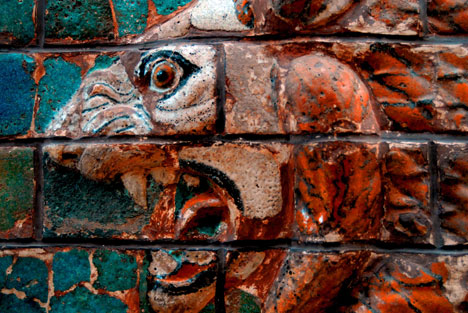King Neb’s New Covenant
The Restoration era Scriptures are the most misunderstood texts in the Bible. Our failure to recognise their recapitulation of patterns from the Torah — and the fact that they are not presented in chronological order but by genre — makes it hard for us to put the pieces together. [1] Very often, we miss great ironies because we don’t get the joke.
One of the greatest “jokes” is the usurping of the throne of Judah’s kings by Nebuchadnezzar. The five point Covenant structure introduces the Great King in its preamble, then delegates power to a vassal. All of God’s Covenants follow this pattern, as well as the books of Moses, the structure of Deuteronomy, Psalms and the Revelation just to name a few.
Israel desired a king like the Gentiles, but this was impossible. An Israelite king would always be subject to a higher power. (This is exactly the debate going on in Western culture, isn’t it?) Saul failed to be a vassal under God, and was disqualified. The later kings of Israel and Judah also failed to be vassals, so the Covenant scroll, the mediating firmament, would be torn apart, a garment rolled in blood.
Nebuchadnezzar is referred to by God as His “servant.” This must have been terrifying for the kings of Judah, but they did not repent. Ironically, it was Nebuchadnezzar, a real Gentile king who brought rest to the Land—the 70 years of Sabbaths that were overdue. The number 70 is also ironic. It is the number of bulls sacrificed for the nations at the Feast of Tabernacles, the heart of Israel’s ministry to the nations. God and His prophets can be extremely sarcastic. But it is sarcasm with tears.
Jeremiah’s call for Judah’s king to become willingly subject to Nebuchadnezzar of Babylon was actually a call to a New Covenant, a Covenant of priesthood. [2] Yes, it was a call to national death, but it was also a call to national resurrection.
The death was to release the grasp on forbidden kingdom, that is, kingdom without subjection to God. It was exactly the sin of Adam, the sin with which Satan tempted Christ. The kings refused, and death came anyway, with a much greater devastation for the people of the Land.
But it was still a New Covenant. God set up new worship outside the “camp”, in Babylon, before He destroyed the old worship. Just as the prophets had substituted as mediators before God because the Covenant kings would not listen, Daniel and Ezekiel mediated for the people of God in a higher court. In fact, part of Daniel’s mediation was possibly the destruction of Jerusalem. [3]
Of course, all of this was replayed in the first century. The Jews were invited to submit to a new ruler, the Christ. He, too, called His servants to refrain from fighting, to die and to be resurrected as a new kingdom, the Church.
Some application: We are all kingly vassals in this New Covenant. Being a servant in the king’s house takes a lot of pressure off me as a Christian. Yes, I am to be faithful with everyone and everything over which God has made me a steward. This is the death of being a living sacrifice. But there is nothing to fear, for at the end of the day, if I am faithful, the buck doesn’t stop with me. It stops with the Son of God, my Conqueror, the One Who promised to protect me in a scroll rolled in His blood.
_______________________________________
[1] You must read James Jordan’s The Handwriting on the Wall.
[2] See Jeremiah was a Bullfrog?
[3] See Daniel the Destroyer.



























September 7th, 2010 at 8:48 pm
Amen – the body (individual members and the corporate entity) walks in the footsteps of her Head, following the same (typological or actual) pattern/cycle of death to resurrection.